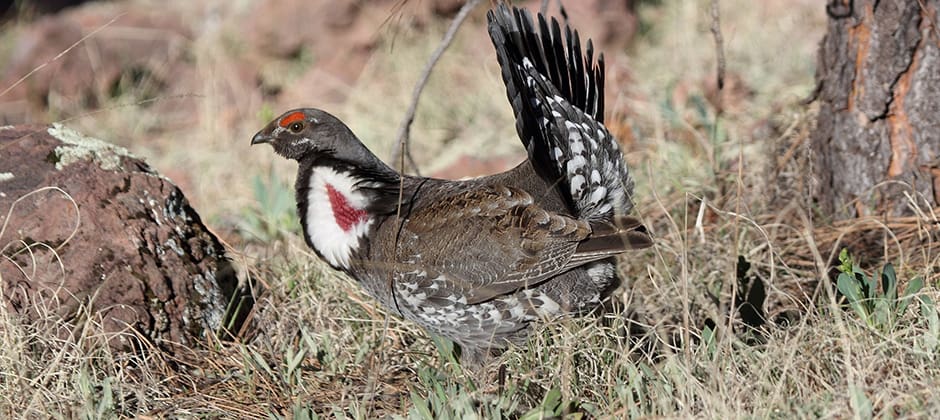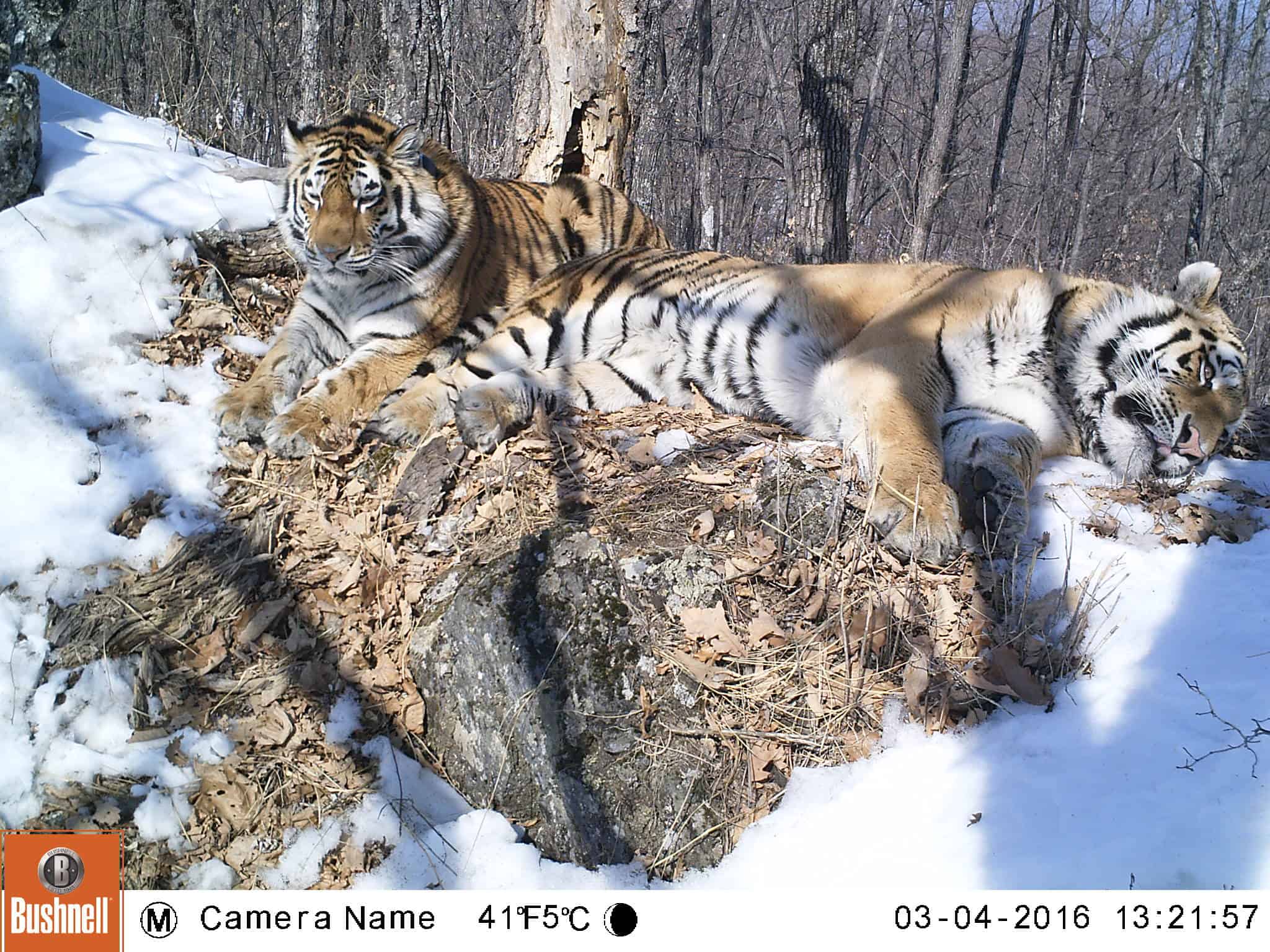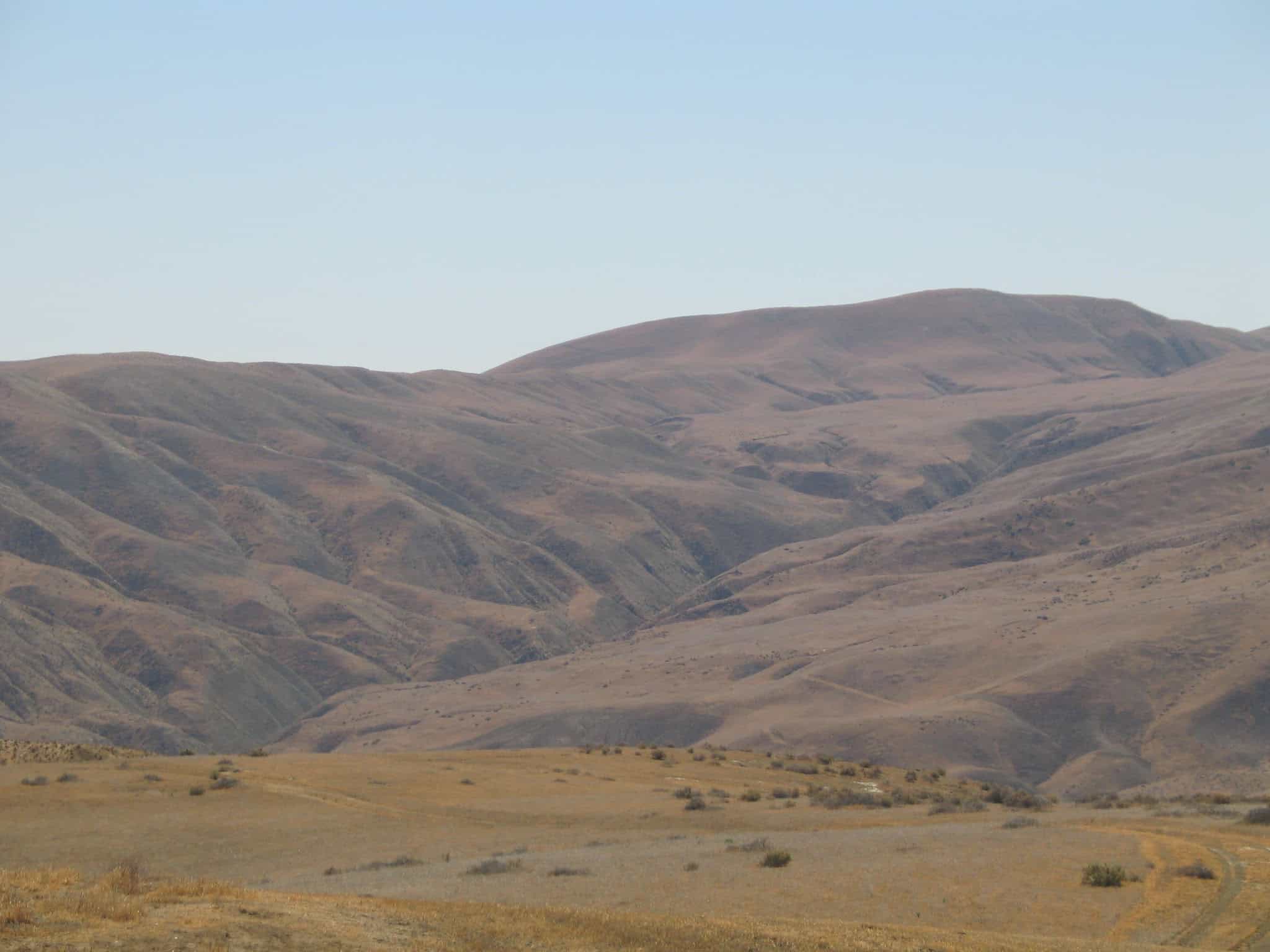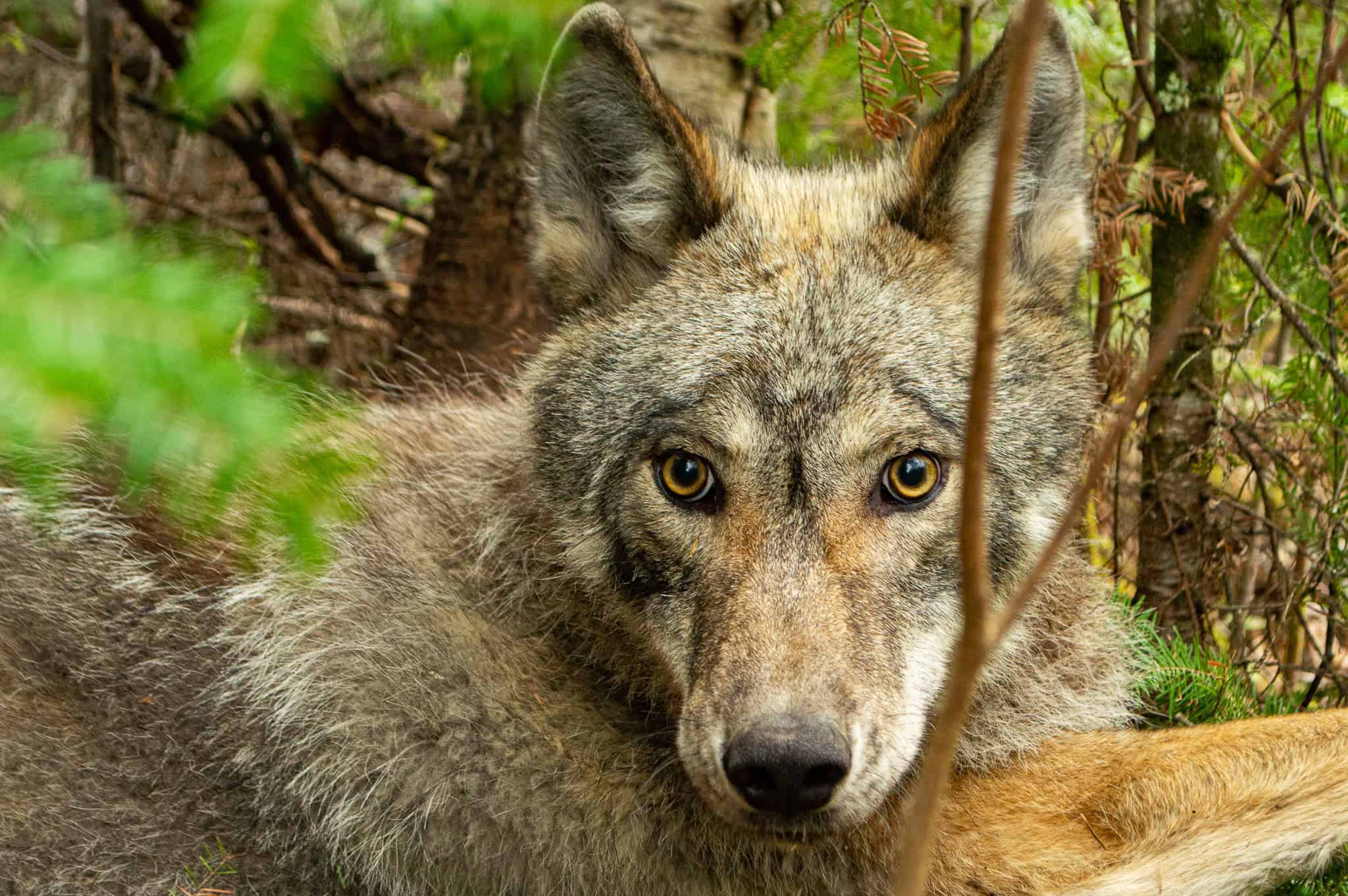Share this article
Sun is setting on dusky grouse in the Southwest
The name of her cabin inspired biologist Jennifer Frey to do a bit of ecological sleuthing. Built by the Civilian Conservation Corps in the Gila National Forest of New Mexico during the Great Depression, the cabin was named “Grouse.” But Frey, a professor in the Department of Fish, Wildlife and Conservation Ecology at New Mexico State University, had never seen grouse anywhere around it. Did they used to be there? Where had they gone?
“That’s what sparked my interest,” she said.
She challenged Joe Youtz, then one of her undergraduate students, to scour museum records looking for sightings of dusky grouse (Dendragapus obscurus) throughout the American Southwest. What he found told them a bit about the bird’s past, but it said even more about its future. Climate change will likely eliminate grouse from the region within decades, they discovered, but catastrophic wildfire may cut its future even shorter.
Before they could publish their findings, the Calf Canyon/Hermits Peak Fire—New Mexico’s largest wildfire ever—burned through some of the remaining forests used by dusky grouse in the state, raising their concerns about the birds’ future even more.
“The prevailing wisdom has been that fire is beneficial for dusky grouse,” said Frey, a TWS member. That may be true elsewhere, where fires open up forests and provide shrubby areas where they can nest, she said, “but the situation in the American Southwest is quite a bit different.”
Dusky grouse occupy conifer forests throughout the Rockies into northern Canada. New Mexico and Arizona represent the southern edge of the birds’ range, where they occupy pockets of high-altitude landscapes—so-called “sky islands” that rise above the deserts.
In a study published in Avian Conservation and Ecology, Frey and Youtz modeled the impact of climate change on southwestern dusky grouse habitats through the year 2100 based on two different carbon emission scenarios. They also modeled habitat loss due to recent fires.
Their models showed that under both scenarios climate change would likely eliminate high-quality grouse habitat almost entirely from the region, starting on the southern edge of the bird’s range and working its way north. But when they added wildfire to their models, they found that those forests could burn well before changing vegetation made them uninhabitable for grouse.
The wildfire is acting like an eraser, Frey said. “It’s erasing all the mixed-conifer forests from these mountain-top islands. We’re losing it. There’s mounting evidence that many of these forests aren’t going to succeed back into conifer forests. This is a serious conservation situation now, and it’s happening faster than I ever would have imagined.”
For Frey, the history was also important. The dusky grouse was once an important game bird in the region, but data about it were hard to come by. After Yountz searched museum records for grouse in New Mexico and Arizona, the team decided to look even further. They added some camera trap data, plus reports from U.S. Forest Service employees, and then some sightings reported to the citizen science application iNaturalist.
“We had 747 records for both states going back over 100 years,” Youtz said.
But when they saw how important vegetation was for the grouse, they began to wonder about the dusky grouse’s future.
“We wanted to take this a step forward to find what would be the potential impacts of climate change on grouse in this region,” Youtz said.
By 2060, they found, grouse habitats would be practically eliminated in the Southwest. Even if greenhouse gases were curbed immediately, most resources for grouse would be gone. Adding the effects of fire only made the picture bleaker. Then, the Calf Canyon/Hermits Peak Fire underscored how imminent their findings may be.
“We see this as being a serious situation for the dusky grouse,” Frey said. “They are losing habitat at a rapid and sudden rate.”
Translocating southwestern grouse farther north could help protect the species in the central mountains, she said, and they may have some unique genetics that could help them adapt to a warming climate.
“We don’t want to see it lost,” Frey said. “Hopefully this will prompt more conservation, more research, so that we know how to manage the forest—and manage the species itself—to ensure that it doesn’t disappear on us.”
Header Image:
Warming temperatures and catastrophic wildfire are impacting dusky grouse in the American Southwest.
Credit: Dominic Sherony








